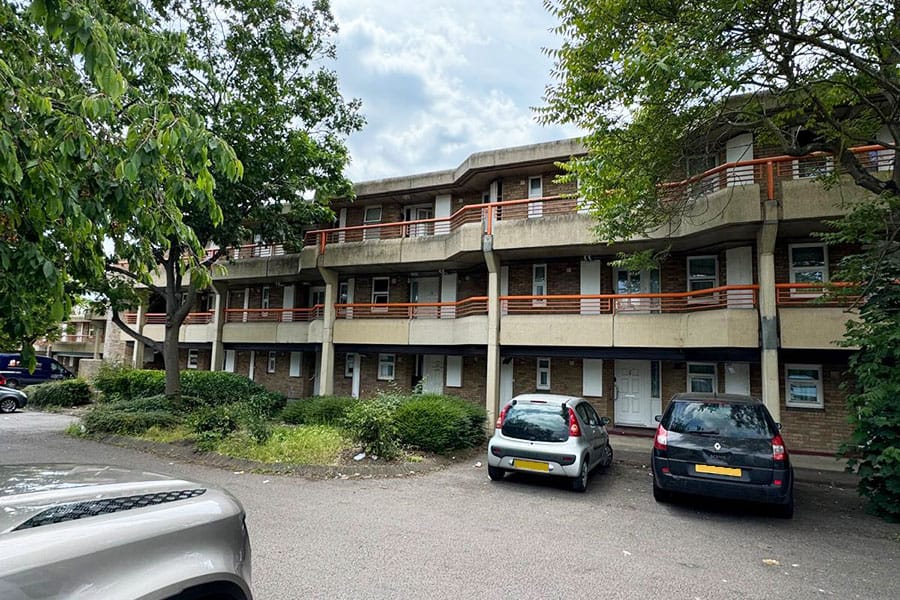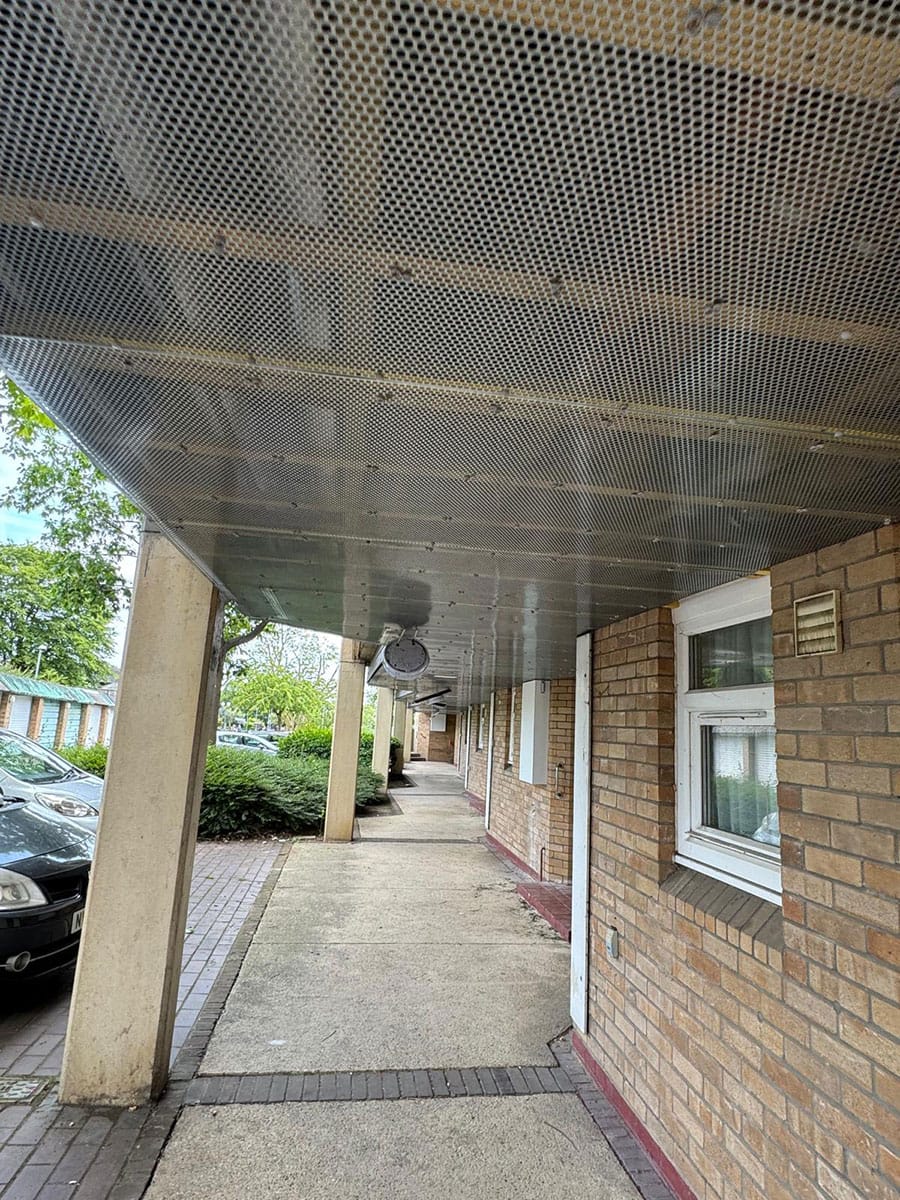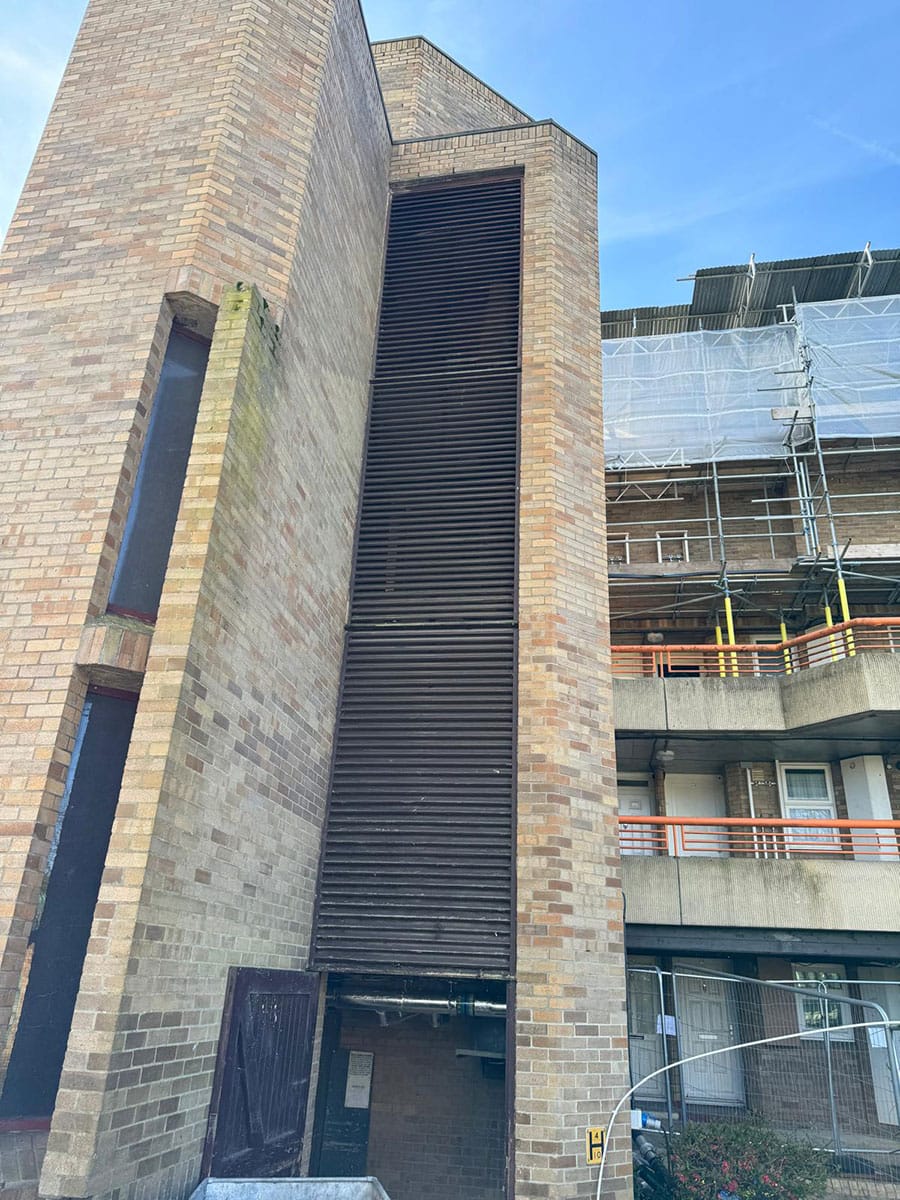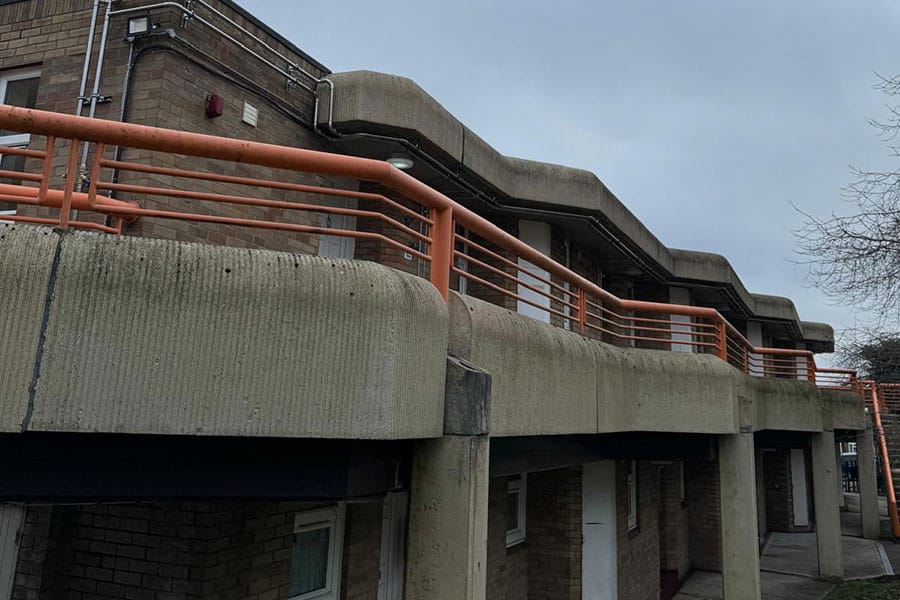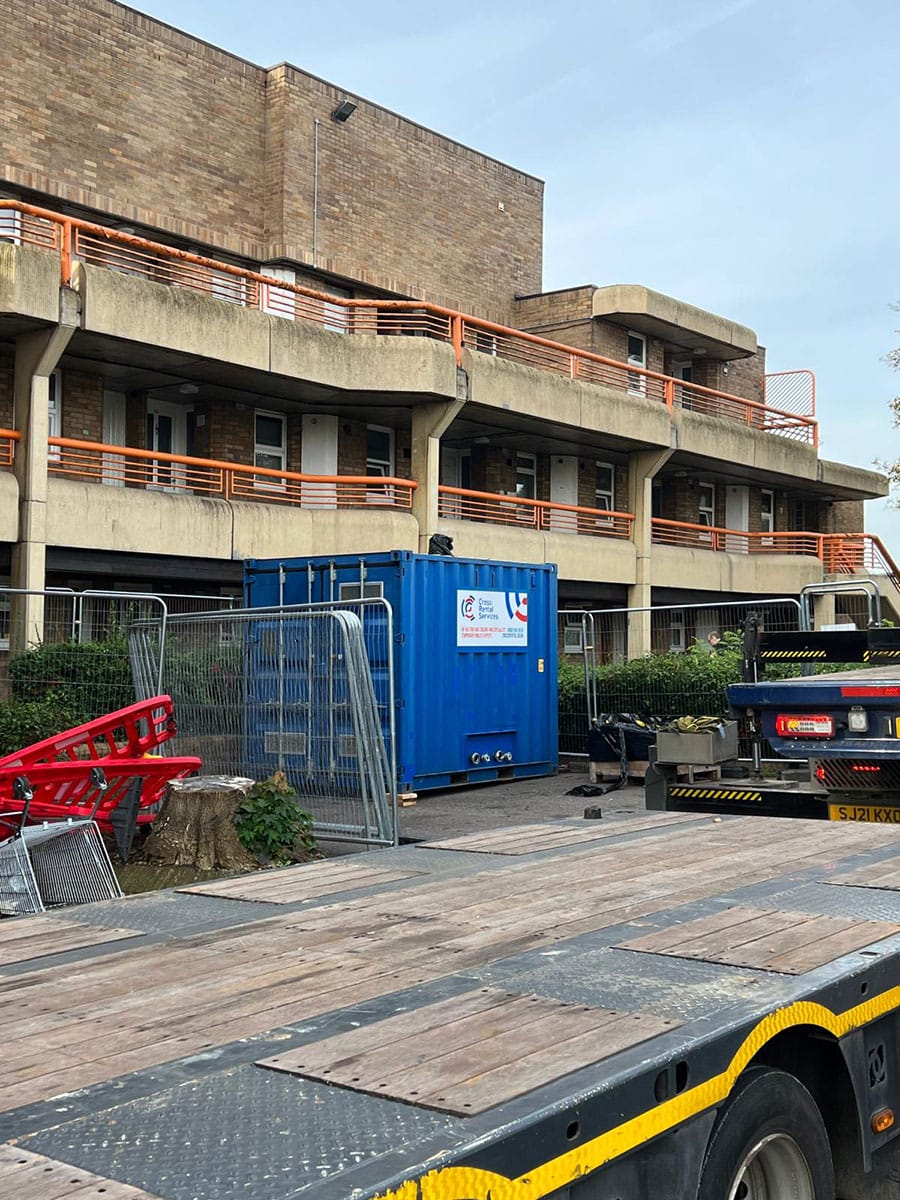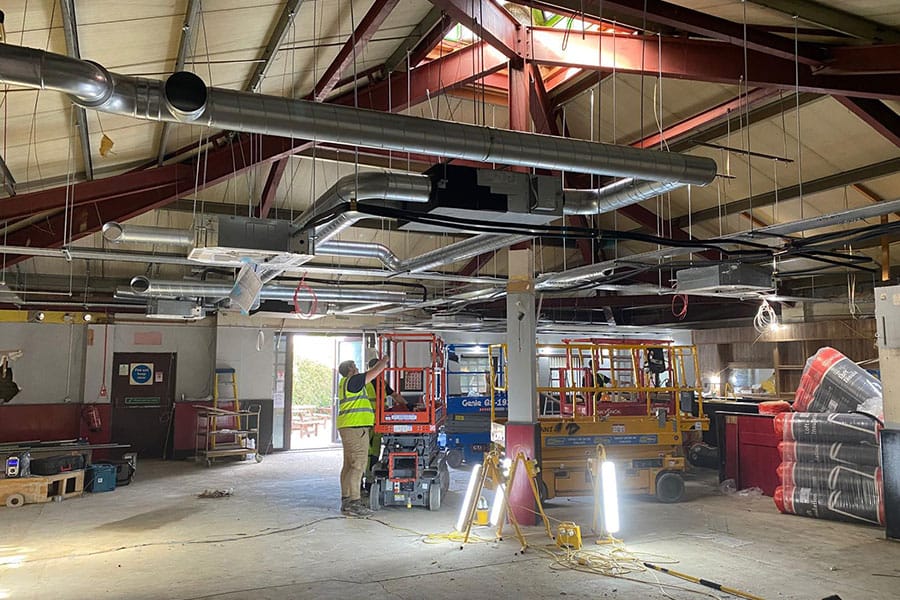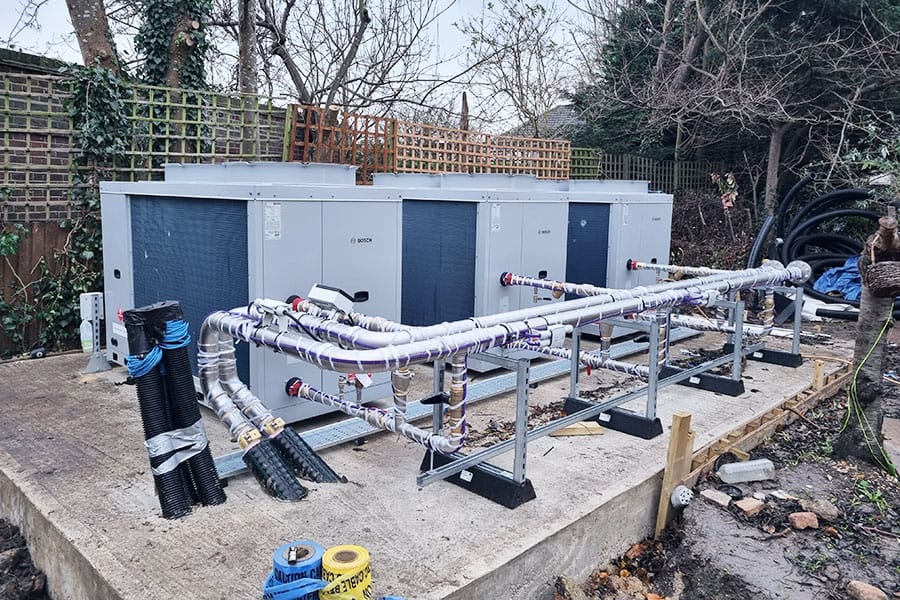Background
Whitmore Court, a sheltered housing scheme comprising 91 properties, required significant upgrades to its heating and hot water systems. The properties, which included both leasehold and rented units, were outdated in terms of their mechanical systems. The tenants, many of whom were elderly or had specific care requirements, needed a reliable heating and hot water supply throughout the duration of the works.
The project required a comprehensive solution to provide heating and hot water to all 91 properties while the existing systems were being replaced. This case study explores how the project team successfully navigated these challenges, delivering a large volume of installations while maintaining service continuity for the tenants.
Scope of Work
The project included the installation of modern heating and hot water systems across the sheltered scheme. The key elements of the scope were as follows:
1. Full Plant and District Heating System Installations
Full installation of district heating and plant room systems, designed to ensure all properties received reliable, efficient heating and hot water.
Flow and return systems were installed to optimise the distribution of heat across all 91 units.
2. Individual Property Installations
S-plans and cylinder installations for each property, tailored to meet the specific needs of each unit.
Installation of radiators and domestic installations for each of the properties, ensuring a comfortable living environment for all tenants.
3. Temporary Heating and Hot Water Solutions
To minimise disruption for the tenants, a temporary containerised plant was set up at the beginning of the works. This provided interim heating and hot water to all properties while the permanent systems were being installed.
The installation was completed in phases, with a changeover basis for each property to ensure no tenants were left without essential services during the upgrade process.
4. Pre-Condition Surveys
Pre-condition surveys were carried out for each property prior to work commencing. This ensured that all necessary preparations were made and that the upgrades would meet the specific requirements of each individual home.
5. Tenant and Stakeholder Management
Managing a large volume of installs across a residential environment was a key challenge. The team coordinated closely with tenants, ensuring minimal disruption and addressing any concerns related to the works.
The properties included both leasehold and rented units, meaning that there were additional considerations related to ownership and tenant rights, which were managed effectively throughout the project.
Key Challenges and Solutions
Temporary Plant and Continuity of Service
A major challenge was ensuring that tenants continued to receive heating and hot water while the works were underway. The solution was to install a temporary containerised plant at the start of the project. This allowed for a seamless transition to the new systems without interrupting services for tenants.
Managing Multiple Installations Simultaneously
Given the large number of properties and the complexity of the installations, the project required careful coordination. The team implemented a changeover basis installation schedule, completing work in phases to minimise disruption and ensure tenants’ heating and hot water needs were met continuously.
Tenant Communication and Minimising Disruption
With many elderly and vulnerable tenants, clear communication was essential. The team kept tenants informed about the schedule, the work being carried out, and any potential disruptions. Additionally, as the project involved both leasehold and rented properties, particular care was taken to respect the rights and expectations of all involved.
Residential Environment and Leasehold Properties
The works were carried out in a residential environment, which required careful planning and execution to avoid disturbing tenants. In addition, as some properties were leasehold, specific procedures were followed to ensure compliance with legal and contractual obligations.
Project Management and Team Coordination
With a high volume of installations and a diverse set of tenant needs, effective project management was crucial to the success of Whitmore Court. The project involved multiple teams working simultaneously across various tasks, and the management team ensured that each aspect of the work was completed on time and to specification.
Key management actions included:
- Detailed planning and scheduling of installations, with careful consideration given to tenant needs and the need to maintain heating and hot water supply.
- Regular communication with tenants to keep them informed and address any concerns or queries throughout the project.
- Collaboration with local authorities and stakeholders to ensure all regulatory requirements were met and that the work was carried out with minimal impact on the local community.
Outcomes and Impact
- Successful System Upgrades: The upgrade of heating and hot water systems was successfully completed for all 91 properties. The new systems are more efficient, providing reliable heating and hot water while reducing long-term maintenance costs.
- Tenant Satisfaction: Despite the complexity of the works, tenants were able to continue enjoying essential services throughout the project. The phased installation and temporary solutions ensured that no property was left without heating or hot water during the upgrade.
- Energy Efficiency: The new systems are designed to be energy-efficient, reducing energy consumption and promoting sustainability across the entire scheme.
- Compliance and Legal Considerations: The works were carried out in compliance with all relevant regulations, including those specific to residential and leasehold properties.
Conclusion
The Whitmore Court project demonstrates how a complex and large-scale heating and hot water system upgrade can be delivered successfully in a residential environment. Through careful planning, tenant-focused solutions, and effective project management, the team was able to provide high-quality installations across 91 properties while maintaining tenant comfort and satisfaction.
This case study highlights our ability to manage large volumes of installations in a live residential setting, ensuring minimal disruption for tenants. The use of temporary plant and phased installations was key to maintaining continuous service, and the project’s completion in 2023 marks a successful example of both technical expertise and client management in the delivery of heating and hot water systems for sheltered housing schemes.
